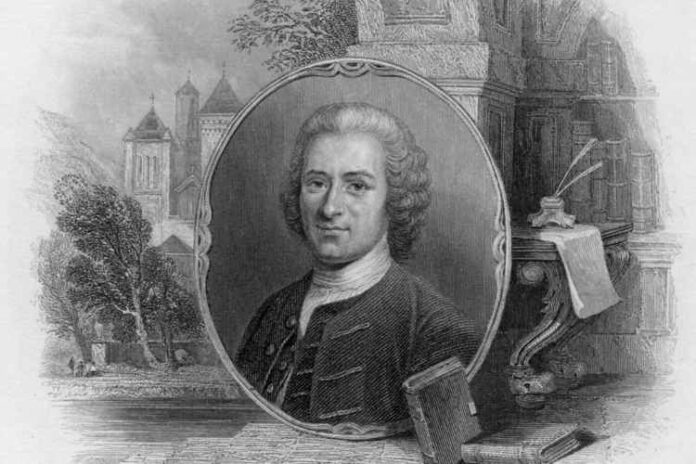The world-famous painter Henri Rousseau was one of the most extraordinary painters of the early twentieth century. He was a significant Post-Impressionist who created naive, childlike fantasy settings of magical awe. He is most renowned for his expansive jungle settings bursting with rich vegetation and creatures.
Despite spending time with the top critics and artists of the day, including Pablo Picasso and Guillaume Apollinaire, Henri Rousseau found it difficult to gain respect throughout his lifetime. We look at some of this underappreciated artist’s most fascinating facts, including how he founded the innocent part of Post-Impressionism.
The Untrained Master of the Modern Art
Henri Rousseau, a French post-impressionist painter, was specifically criticized by reviewers for his “childlike” compositions. However, many notable painters throughout history were underappreciated in their time.
Despite never having traveled outside France or experienced a jungle firsthand, the self-taught naive artist became most recognized for his gorgeous jungle paintings. Instead, children’s books, the Paris zoo, and floral gardens inspired his now-famous paintings.
Rousseau’s artwork appeared rough and unpolished by the slick, refined standards of academic painting in the 19th century. His use of color, particularly black, was eccentric, his figures and compositions were awkward and clumsy, and he could not paint feet. He also lacked a firm sense of perspective. For example, look at the oddly twisted limbs of his stiff Football Players of 1908 to understand how naïve the artist could come out as.
In the end, Rousseau’s paintings brought him long-lasting fame, particularly his fantastical, opulent jungle scenes, which he produced in the final six years of his life before his death in 1910 at the age of 66, with the exception of the tapestry-like Surprised!, also known as Tiger in a Tropical Storm.
All About Henri Rousseau’s Art
The strength of his works, however, cannot be denied. He never left France, so his imaginative depictions of ferocious jungles and wild animals are based solely on literature and trips to botanical gardens. Nevertheless, they appeal to our primal instincts.
Along with his distinctive creative style, he also established his unorthodox painting techniques, including layering content (sky first, then other background components, followed by foreground topics), adding colors one at a time, and carefully working the canvas from the top down.
List of Henri Rousseau’s Paintings
Through his experiences in Paris and his imagination, Rousseau created the worlds shown in his paintings of the jungle. “When I step into the hothouses and see the plants from exotic lands, it seems to me that I am in a dream,” said Rosseau. Let’s discuss some of the best Henri Rousseau paintings.
The Sleeping Gypsy
The Sleeping Gypsy examines a subject prevalent among his fellow Parisian artists at the period, much as Rousseau’s paintings of the jungle. In this instance, it is the Romany people, also known as Les bohémiens in France, an ethnic group said to have roots in northern India and have traveled around Europe for a thousand years.
The flattened shapes, childlike rendering of the woman’s face, and almost comical eye of the lion with its easily identifiable pupil and sclera are all examples of Rousseau’s naive approach in this painting.
When Homer nods off and dreams about the scenario shown in The Sleeping Gypsy, the artwork appears in an episode of The Simpsons titled “Mom and Pop Art.”
Tiger in a Tropical Storm
Henri Rousseau’s classic jungle paintings began with Tiger in a Tropical Storm, also known as Surprised! The image depicts a tiger in the forest, lit by lightning, either getting ready to pounce on its prey or hiding in fear of the unexpected flash.
When the painting was initially displayed at the Salon des Indépendants in 1891, some critics derided it for its “childish” composition, especially the tiger’s flatness and the lack of academic training seen in the surrounding greenery, grass, trees, and plants.
However, Rousseau’s naivety is admired today as a result of its flatness. The lashing rain, created using diagonal strips of translucent silver paint, is another striking aspect of this piece of art.
The Hungry Lion Throws Itself on the Antelope
Rousseau created The Hungry Lion after returning to jungle paintings after a 10-year hiatus brought on by the poor reaction of Tiger in a Tropical Storm. The avant-garde artists Henri Matisse, André Derain, and Maurice de Vlaminck, subsequently referred to as the Fauves, were shown alongside it at the Salon d’Automne in 1905.
The painters of Fauvism immensely appreciated Rousseau even though he was not a Fauve and drew inspiration from his work, particularly his renderings of African landscapes, vivid, strong colors, and untrained, amateur style, which they perceived as evocative of European folk art.
Boy On The Rocks
Henri Rousseau painted several pictures of children, Boy on the Rocks being one of them; Child with a Doll is another prominent one (1905). Like the subjects in most of his other paintings of kids, the boy in this picture is a little unnerving.
His physique is oversized, and his face resembles that of an adult rather than a child—features more typical in Medieval European paintings of infants and children, such as Paolo Uccello’s Madonna and Child.
Boy on the Rocks’ flatness and two-dimensionality—common traits in Rousseau’s corpus of work—also conjure the unpleasant impact. Similar to the boy’s location on the rocks, it appears as though Rousseau “copied and pasted” him onto the scene.
Conclusion
The most well-known works about jungles are those by Henri Rousseau. However, he never encountered any and never left France. His artistic influences include the illustrations in children’s books, the Parisian botanical gardens, and tableaus of taxidermied wild animals.
He also saw soldiers on duty who had survived the French expedition to Mexico and heard their accounts of the subtropical region they had explored. Around 25 of Rousseau’s works of art have a forest setting. Most of the densely packed, perplexing dreams were made between 1904 and 1910.


